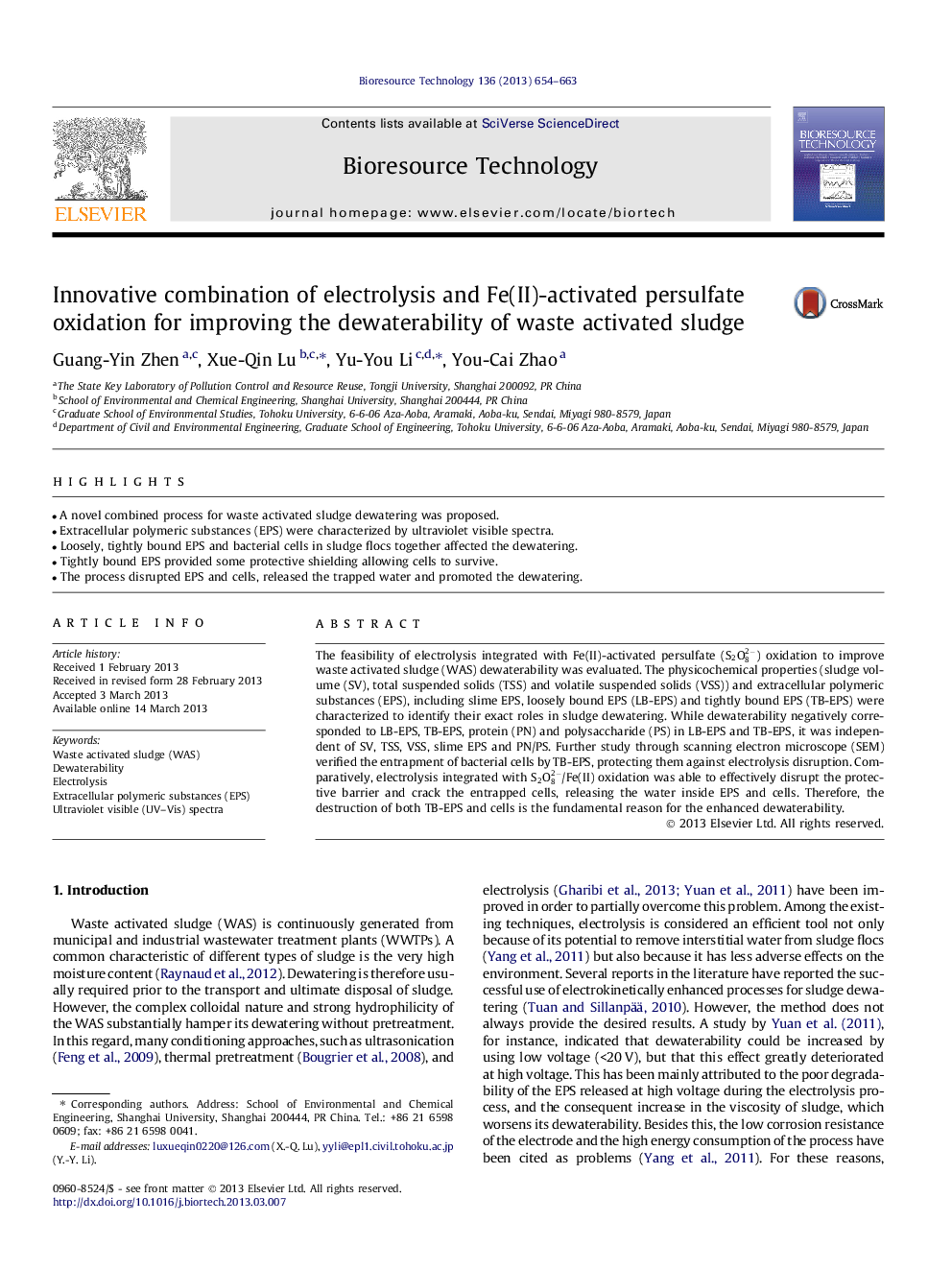| Article ID | Journal | Published Year | Pages | File Type |
|---|---|---|---|---|
| 7082890 | Bioresource Technology | 2013 | 10 Pages |
Abstract
The feasibility of electrolysis integrated with Fe(II)-activated persulfate (S2O82-) oxidation to improve waste activated sludge (WAS) dewaterability was evaluated. The physicochemical properties (sludge volume (SV), total suspended solids (TSS) and volatile suspended solids (VSS)) and extracellular polymeric substances (EPS), including slime EPS, loosely bound EPS (LB-EPS) and tightly bound EPS (TB-EPS) were characterized to identify their exact roles in sludge dewatering. While dewaterability negatively corresponded to LB-EPS, TB-EPS, protein (PN) and polysaccharide (PS) in LB-EPS and TB-EPS, it was independent of SV, TSS, VSS, slime EPS and PN/PS. Further study through scanning electron microscope (SEM) verified the entrapment of bacterial cells by TB-EPS, protecting them against electrolysis disruption. Comparatively, electrolysis integrated with S2O82-/Fe(II) oxidation was able to effectively disrupt the protective barrier and crack the entrapped cells, releasing the water inside EPS and cells. Therefore, the destruction of both TB-EPS and cells is the fundamental reason for the enhanced dewaterability.
Keywords
Related Topics
Physical Sciences and Engineering
Chemical Engineering
Process Chemistry and Technology
Authors
Guang-Yin Zhen, Xue-Qin Lu, Yu-You Li, You-Cai Zhao,
